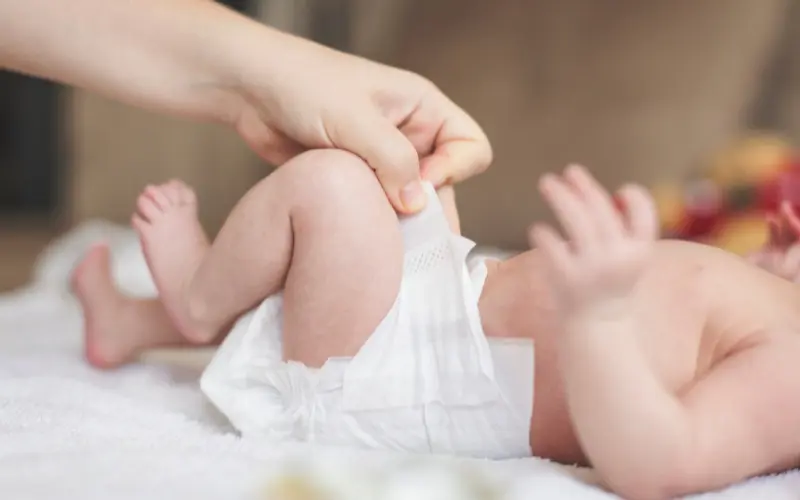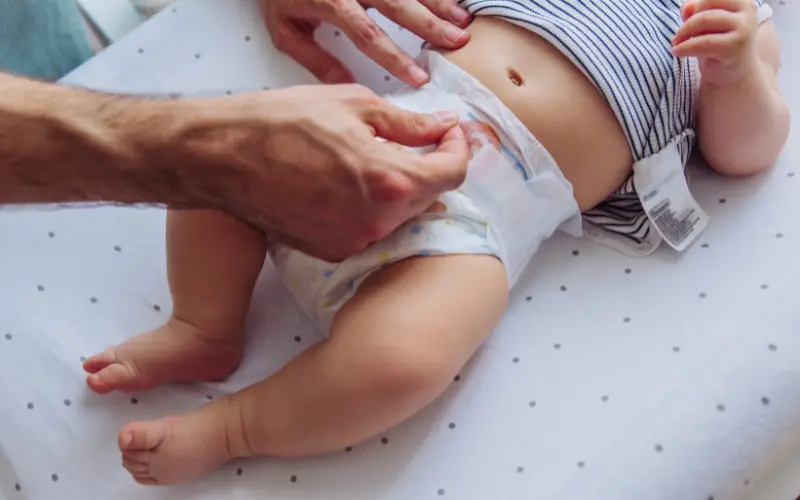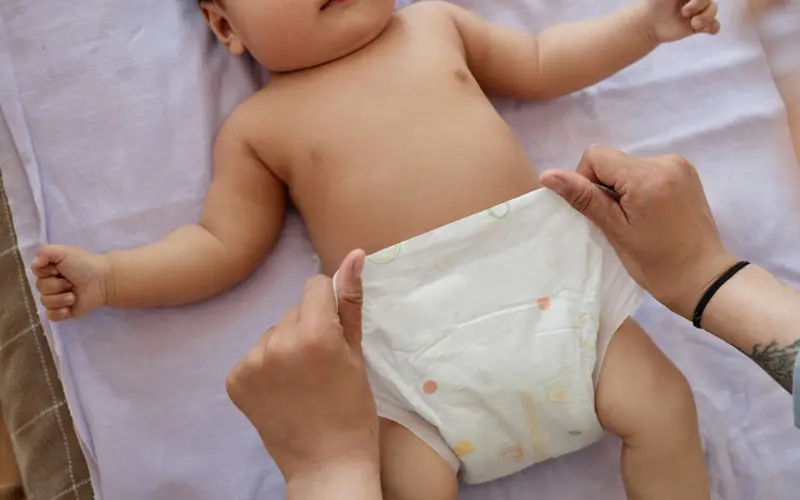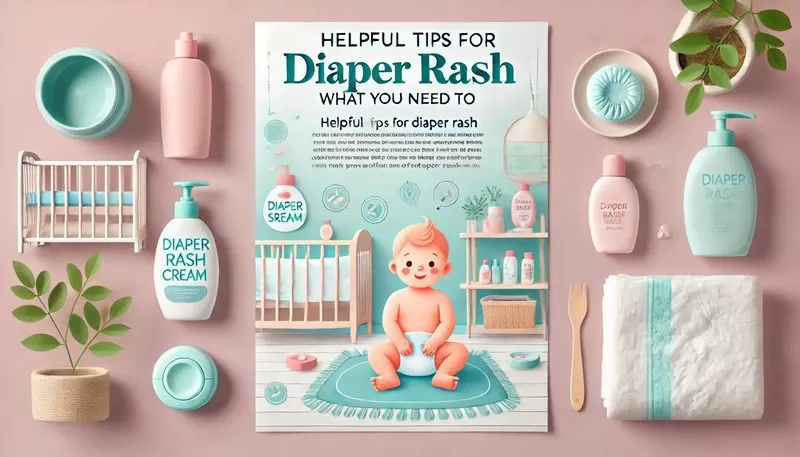Table of Contents
Tips for Diaper Rash
Diaper rash is a common condition that affects many babies, often causing discomfort and distress for both parents and children. Understanding how to prevent and treat diaper rash is essential for maintaining your baby’s comfort and skin health. In this comprehensive guide, we’ll provide helpful tips on managing diaper rash effectively. Along the way, we’ll introduce some highly recommended products from [your store] that can help keep diaper rash at bay. Whether you’re a first-time parent or an experienced caregiver, these insights will ensure you’re well-equipped to handle diaper rash like a pro.
Diaper rash is one of the most common skin conditions that affect babies, but it’s important to know that it can be easily managed with the right care. If you’re looking for more in-depth information on preventing and treating diaper rash, check out this comprehensive guide to diaper rash treatment provided by Mayo Clinic, a trusted and authoritative source for health-related advice. This resource covers everything from symptoms to treatments, helping you keep your baby’s skin healthy and rash-free.
Understanding Diaper Rash: Prevention and Treatment

Diaper rash typically occurs when a baby’s skin becomes irritated due to prolonged contact with wet or soiled diapers. The skin in the diaper area is delicate, and factors like moisture, friction, and bacteria can quickly lead to irritation. While it may be uncomfortable for your little one, diaper rash is usually easy to prevent and treat if caught early.
Prevention Tips:
- Change diapers frequently: Keeping your baby’s skin dry is one of the best ways to prevent rashes. Regular diaper changes, especially after bowel movements, reduce the likelihood of irritation.
- Use a barrier cream: Applying a diaper rash cream, like our Natural Diaper Rash Cream, creates a protective barrier between your baby’s skin and the moisture, reducing the chances of rash development.
- Choose breathable diapers: Opt for diapers that allow air circulation to prevent moisture buildup. Our Breathable Bamboo Diapers are a great option, offering comfort and protection while keeping your baby’s skin dry.
By following these diaper rash prevention tips, you can minimize the risk of rash and keep your baby happy and comfortable.
One of the best ways to prevent diaper rashes is by maintaining a clean, dry environment for your baby’s sensitive skin. Frequent diaper changes, using a barrier cream, and allowing your baby’s skin to breathe without a diaper for short periods can help reduce irritation. You can explore more helpful tips on How to Prevent Diaper Rashes and Skin Irritation [insert link] to ensure your little one stays comfortable and rash-free. Additionally, choosing the right baby products like a soft, absorbent diaper, mild wipes, and hypoallergenic creams [insert product links] can make a big difference in avoiding diaper rash.
How to Treat Diaper Rash

If your baby develops diaper rash, quick action is important to help soothe the skin and prevent the rash from worsening. Mild cases can often be treated at home with simple remedies and over-the-counter creams.
- Clean gently: When changing diapers, avoid harsh wipes. Use soft, fragrance-free baby wipes like our Sensitive Skin Baby Wipes to gently clean the area without causing further irritation.
- Allow air time: Give your baby’s skin some time to breathe by letting them go diaper-free for short periods. Air exposure can help the skin heal faster.
- Apply a thick layer of rash cream: Use a generous amount of diaper rash cream, such as Natural Diaper Rash Cream, to soothe irritated skin and create a barrier that promotes healing.
For more severe cases, or if the rash persists for more than a few days, it’s important to consult a pediatrician, as prescription treatments may be necessary.
Tips to Avoid Diaper Rash

Prevention is always better than cure, and there are several easy steps you can take to avoid diaper rash from occurring in the first place. These tips are designed to keep your baby’s skin healthy and rash-free:
- Switch to cloth diapers or disposable diapers designed for sensitive skin: Cloth diapers can be gentler on the skin, but if you prefer disposable options, make sure to choose diapers that are hypoallergenic and free of harsh chemicals. Our Eco-Friendly Diapers are an excellent option for babies with sensitive skin.
- Watch for signs of irritation: Even mild redness can be a sign that a rash is forming. Catching it early allows you to address the issue before it becomes worse.
- Limit irritants: Products with fragrances, dyes, or alcohol can contribute to skin irritation. Always opt for products like our Fragrance-Free Baby Wipes, which are gentle and safe for daily use.
These simple adjustments can go a long way in keeping diaper rash at bay.
How to Deal With Sleep Deprivation After Baby: Sleep deprivation is one of the biggest challenges new parents face. Between night feedings and diaper changes, getting a full night’s sleep often feels impossible. Establishing a bedtime routine and learning to take naps whenever your baby does can help, but sometimes it’s easier said than done. For more tips on managing those sleepless nights, check out our guide on Dealing with Sleep Deprivation After Baby and learn how to adjust your lifestyle for better rest, without sacrificing your baby’s needs.
Common Causes of Diaper Rash

Understanding what causes diaper rash can help you take the right preventative steps. Below are some of the most common factors that lead to diaper rash:
- Wetness: Prolonged exposure to moisture is the primary cause of diaper rash. Even the best diapers can hold only so much liquid before the skin becomes irritated.
- Friction: Constant rubbing between the diaper and the skin can cause chafing, leading to irritation and rash.
- Sensitive skin: Some babies have more sensitive skin than others, making them more prone to developing rashes.
- Diet changes: When your baby starts eating solid foods, their bowel movements change, which can contribute to diaper rash.
By addressing these causes with preventative measures, you can significantly reduce the frequency and severity of diaper rashes.
Diaper Rash: Prevention and Treatment – Additional Tips

If you’re dealing with frequent diaper rashes despite your best efforts, it may be worth exploring alternative treatments. Some parents find that switching to cloth diapers or using diaper liners can help. Additionally, be mindful of the laundry detergent you use if you’re washing cloth diapers. Choosing a hypoallergenic detergent can prevent rashes caused by chemical sensitivities.
Our Hypoallergenic Laundry Detergent is formulated specifically for baby clothes and cloth diapers, making it ideal for sensitive skin. By eliminating harsh chemicals, you can reduce the risk of skin irritation and diaper rash.
Managing Diaper Blowouts and Leaks can be a common challenge for parents, but with a few key tips, it becomes much easier. First, ensure you’re using a properly fitted diaper to minimize leaks. Brands that offer adjustable options or elastic waistbands can help create a snug fit, reducing the chances of a blowout. Additionally, changing diapers frequently and using high-absorbency products is crucial in preventing leaks. For overnight protection, consider extra absorbent diapers designed specifically to handle longer wear times. These strategies can make a significant difference in keeping your baby comfortable and minimizing messy situations.
How to Treat Diaper Rash – When to See a Doctor

In most cases, diaper rash can be treated at home with the right products and care. However, if your baby’s rash is severe, spreads beyond the diaper area, or does not improve within a few days, it’s time to consult a healthcare professional. Signs that you may need to seek medical advice include:
- Blisters or open sores
- Fever or signs of infection
- Persistent or worsening rash despite treatment
In such cases, a pediatrician may prescribe a stronger cream or ointment to help clear up the rash.
While dealing with diaper rash is a common concern for parents, it’s important to be aware of other conditions that may affect newborns, such as jaundice. Jaundice in newborns is a condition that results in yellowing of the skin and eyes due to high levels of bilirubin. Learn more about the symptoms, causes, and Jaundice in Newborns – Symptoms, Causes, and Treatment to stay informed and ensure your baby’s health and comfort.
Tips to Avoid Diaper Rash – A Daily Routine for Prevention
Incorporating a solid daily routine can help prevent diaper rash from becoming a recurring issue. Here’s a suggested routine to keep your baby’s skin healthy:
- Morning diaper change: Start the day with a fresh diaper and apply a thin layer of our Natural Diaper Rash Cream to protect your baby’s skin.
- Regular diaper changes: Set a reminder to check your baby’s diaper every 2-3 hours. Even if the diaper feels dry, a quick check can help prevent rash.
- Post-bath protection: After bath time, allow the skin to dry completely before putting on a diaper. Applying a light layer of Natural Diaper Rash Cream after the bath provides an additional barrier against moisture.
By sticking to this routine, you can greatly reduce the likelihood of diaper rash forming in the first place.
Final Thoughts on Diaper Rash: Prevention and Treatment
Diaper rash can be frustrating for both parents and babies, but with the right care, it can be easily managed or prevented altogether. Remember to change diapers frequently, use gentle products, and be mindful of your baby’s skin needs. Investing in high-quality products, like our Natural Diaper Rash Cream, Breathable Bamboo Diapers, and Sensitive Skin Baby Wipes, can make a significant difference in preventing and treating diaper rash.
If you’re proactive about skin care and hygiene, you can keep your baby comfortable and rash-free, making diaper changes a stress-free experience for both of you.
Traveling with a baby can be an exciting adventure, but it requires careful planning and the right gear to ensure a smooth journey. Essentials like a comfortable baby carrier, a lightweight travel stroller, and a spacious diaper bag are must-haves for any trip. It’s also important to bring along baby-friendly travel accessories such as portable bottle warmers, compact changing pads, and extra diapers. When packing, don’t forget to include soothing creams to prevent diaper rash during long travel hours. Check out our top recommendations for How to travel with a baby, and the gear you need that will make your trip stress-free and enjoyable for both you and your little one.

